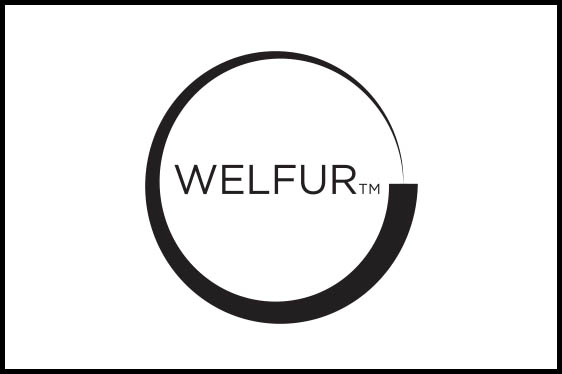Animal Welfare

Dec 19 2019 - Fox pelts certified in accordance with the European WelFur standard will be on offer for the first time during the international fur auction at Saga Furs in Helsinki, Finland, 19-20 December 2019. WelFur is the biggest and most comprehensive animal welfare programme ever to be implemented across an entire continent, which count 2,918 European mink and fox farms currently housing 35 million animals.
"Consumers today want to know how the products they buy have come about. Animal welfare is an important societal value, it means the world to a lot of people, and we are incredibly proud of European fur farmers setting a new standard for on-farm animal welfare assessment across an entire industry. This has not been done anywhere before. Still, product transparency is clearly the direction society moves towards, and we are proud to be livestock first movers," said Mette Lykke Nielsen, CEO of Fur Europe, a Brussels-based umbrella organisation for the entire European fur industry.
WelFur is developed by independent scientists from seven European universities and sets out to establish a reliable, fact-based picture of the level of animal welfare on each fur farm. The farm assessments, as well as the issuing of WelFur certificates, are carried out by independent third-party Baltic Control.
The WelFur programme is based solely on the principles and methodology of the European Commission’s Welfare Quality project and has been endorsed in the European Commission’s database for self-regulations. It is the first and only animal welfare programme to be obtained in the database for self-regulations that requires testing against principles of openness, reliability, good faith, monitoring, continuous improvement and inclusiveness.
"The independence of the programme has been critical to us from the beginning because as a producer, you cannot reliably assess yourself. I think independent assessments are particularly important when it concerns animals since all animal debates quickly become very heated and emotional," Mette Lykke Nielsen said.
The auction sales of WelFur certified fur pelts kicks off in the morning of 19 December. Due to the lengthy manufacturing process of handmade fur products, natural fur products carrying the WelFur certification will only become widely available to consumers from September 2020 onwards.
Facts about WelFur
WelFur is based on the principles of the European Welfare Quality project and developed by independent scientists from seven European universities*. External reviewers have secured the conservation of the scientific quality and alignment with the original Welfare Quality project.
All farm assessments are undertaken by independent third-party Baltic Control . Baltic Control is also the sole issuer of WelFur certificates.
Animal-based measurements are central in WelFur. These measurements are an indirect way to ask the animals themselves about their well-being. They are widely endorsed by animal welfare experts, albeit they are not yet commonly used in animal welfare assessments.
2,918 fox and mink farms across 22 European countries have been assessed in the period 2017-2019, which concludes the implementation phase. Two percent of the fur farms did not achieve a WelFur certificate.
There is an increasing interest of WelFur outside Europe, and the programme is being expanded to individual fur farms outside Europe as well.
A WelFur protocol for finnraccoon has been developed following the protocols for mink and fox. The finnraccoon protocol is currently being tested.
The first sales of WelFur certified mink will take place at Kopenhagen Fur, Denmark, in February 2020.
* University of Eastern Finland, MTT Agrifood Research (Finland), Aarhus University (Denmark), Norwegian University of Life Sciences, Swedish University of Agricultural Sciences, University of Utrecht (The Netherlands), French National Institute of Agronomic Research